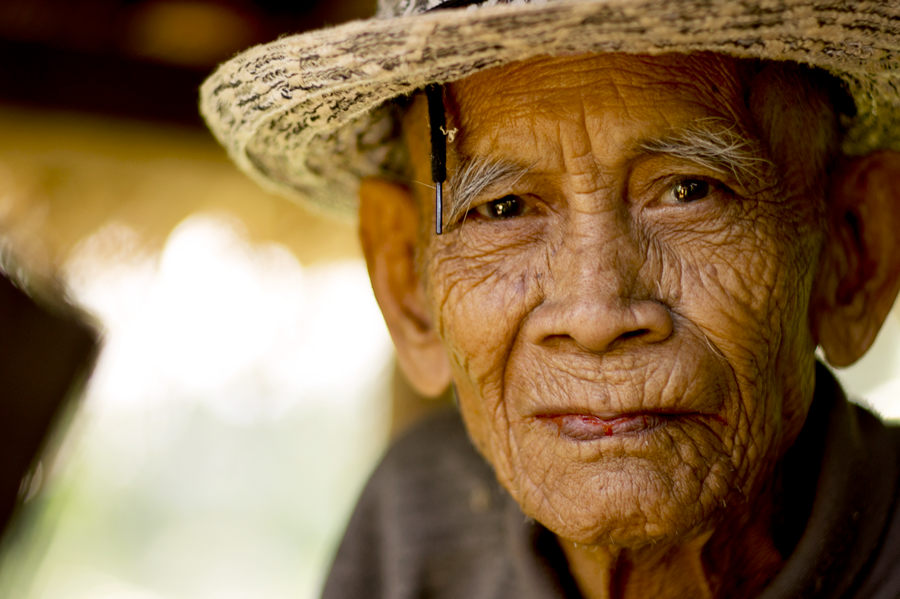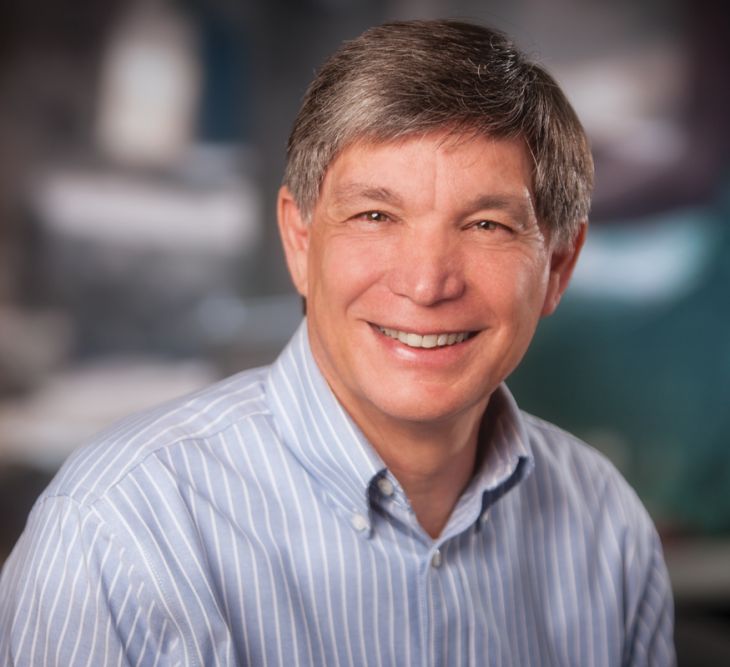It Can Be Done
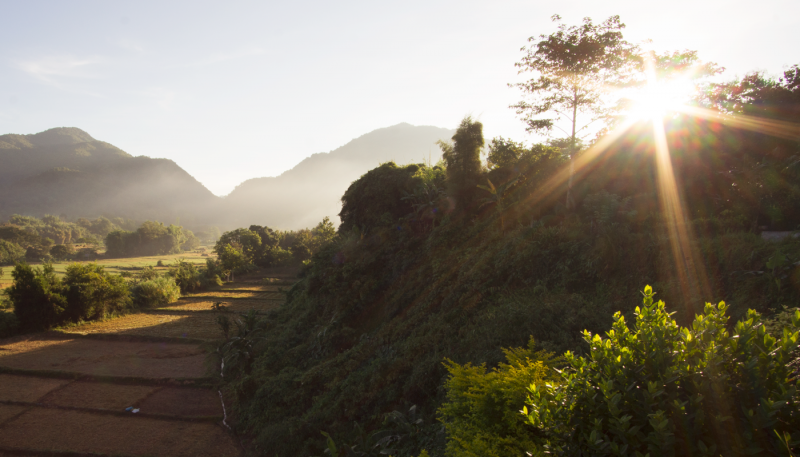
In talkative twos and threes, they drifted through the doorway.
Prai men, women and children sat on the floor, filling the mats and then every bit of the tile. Eventually several even stood on the porch looking through the front windows.
The people of Sandy Creek village came to sing, to chat, to take part in a brief literacy lesson. But most of all, they came to hear Dee, one of their own people, teach. He opened the Word of God and taught them in their own language.
Bible teaching was never this crowded
“When we planned this building out,” Dee said, “we thought, ‘We’ll make this extra big. We’ll probably never need it.’ Now we’re thinking, ‘Hmm, how are we going to fit everybody in?’”

Each time Dee (right) goes to Sandy Creek, he brings more bricks to expand the now-too-small building.
That wasn’t a problem the missionaries there had anticipated, either. From August 1996 to February 1997, the couple from the USA spent four days a week in Sandy Creek village.
“We taught the kids in school in the afternoons,” the missionary said. “We taught English, Prai literacy and some Bible. Then we would visit around the village the rest of the afternoon and see if we could have some conversations about the Bible, the Lord, pre-evangelism, etc. We would have an early supper and teach literacy to adults in the evening. After literacy class we would try to visit around the village some more.”
But they didn’t see fruit.
“We never could get a group together who really wanted to hear the gospel, and in fact, we could find no individuals who seemed interested in the gospel,” he said.
They tried taking some of the people from Sandy Creek to visit a church among Thailand’s Lawa people, and Lawa believers made a return trip. “The Lawa believers made a very good impression on them,” the missionary said. “However, no one was ready to seriously hear the Word of God taught at that time. In the end the [village] headman asked us to quit coming.”
Roughly ten years later another missions group brought a mobile medical clinic to Sandy Creek. In addition to treating several people for a variety of ills, they preached short messages and asked people to fill out cards if they wanted to hear more. Fifteen people filled out cards, which the medical team turned over to the missionary couple for follow-up.
“Out of that group there was one person who was willing to have us teach at his house,” the missionary said. And even that didn’t go well. “His wife did not come into the room, the TV wasn’t turned off for us to teach, and he never remembered anything from one time to the next.”
Since it was so difficult to get to Sandy Creek — even now, with the road improved and widened, it’s nearly an hour of winding back and forth, mostly uphill — and since they were seeing results in the villages of Knife Creek and Gem Forest, the missionary couple focused elsewhere.
It wasn’t the kind of story that inspires people back home, but it didn’t worry the people of Memorial Park Church of Allison Park, Pennsylvania, which has supported the missionaries from the beginning.
“I remember him telling me that it’s amazing that we stuck with him after he told us that it took nine years before there was one convert,” said Don Creasy, director of missions and outreach at Memorial Park. “In human terms that would be counted as a failure. In our minds it was all God’s timing.”
First signs were subtle
The first breakthrough in Sandy Creek came about 2009, though the church planting team did not know it at the time.
Toy, a resident of Sandy Creek, visited her aunt in Gem Forest for a couple of days. Seeing believers reading the Scriptures in Prai and living their lives differently made an impression on her.
“She thought, ‘This God, He seems genuine,’” Dee said.
By now many Prais had cell phones, and Toy began calling her aunt as well as Dee and his wife, Shy. She was curious. Dee and Shy responded by going to Sandy Creek to work in the fields with Toy and her family, sharing from God’s Word and about what He was doing in their lives.
“As the relationship developed we started going up there … and set up a regular teaching schedule with them, and that family became the first Christian family up there,” Dee said.
But trials soon began.
Toy was pregnant, and her baby was born with water on the brain. His head was swollen.
“People said, ‘There you go. Believe in God and that’s what happens to you,’” Dee said. “But she was firm right from the beginning. She said, ‘He may die, but if he does, he’ll be with the Lord, or if he lives, he’ll be with the Lord. It’s OK. I’m going to trust the Lord.’”
Even after visiting a doctor and being told there was nothing to be done, Toy and her family remained firm and prayed.
“Come back in a month,” the doctor had told them, “and we’ll see how
it’s going.”
“A month later they went back to the doctor,” Dee said. “There were no symptoms anymore. And Toy became very interested in sharing about the Lord with others.”
Discouragement followed quickly
The group that Dee and Shy were teaching “gradually grew to five, and then it was ten, and they were really wanting another place to meet besides [Toy’s] house.” the missionary explained that due to the steep terrain in that area, most houses in Sandy Creek are small.
But soon another group came in with its own Bible-teaching agenda. “They actually took people away and forbade them to come anymore,” Dee said. Once more it appeared that the work in Sandy Creek would come to nought.
“We came to a place where we were ready to say, ‘Let’s forget this and not try to do anything here. It’s so difficult. It’s not working,’” Shy said. “We were thinking, ‘Man, this is a waste of time and resources coming up here.’”
Yet there they were, spending the night in the village when, Shy said, “it seemed like the Holy Spirit was saying, ‘Look, I’ve got people here. Just keep pouring yourselves into these people.’”
“It was discouraging for a while,” Dee said. Yet he and Shy followed God’s leading, recognizing that “He’s got His own way of doing it.”
God kept working
As Dee and Shy persevered, people began coming back to their teaching. “They asked … ‘would it be alright if we came and studied with you guys again?’ ” Dee said. “People asking to be taught?” It was a novel experience.
As people again listened to chronological, foundational Bible lessons, they began putting their faith in Christ.

The church planting team shares a meal before teaching in Sandy Creek.
“Four or five spirit doctors became believers, and one was the head spirit doctor of the village,” Dee said. “The spirits came to him at night and tried to talk him out of believing, and he said, ‘You guys are not my owners anymore. The Lord is my owner.
Go away!’”
Many people in the village followed the spirit doctors to the teaching. The missionary cautioned that this didn’t necessarily mean people were interested in God; many probably simply were following as they always had. “But at least they were hearing the Word,” he added.
From about the beginning of 2016, the numbers attending the teaching grew and grew.
“We’ve never seen anything like this, with people coming in big numbers,” Dee said. “The growth toward the end, a lot of it came from people seeing the growth of the believers. They started seeing God’s love in them and toward one another. They also saw the lack of fear. They could go anywhere they wanted.”
So many people were coming to hear Bible lessons that at the time I visited in the fall of 2016, 75 people were crowding into the meeting. I thought the place was packed, but that was fewer than had been there recently.
Challenges are ahead
In the face of this apparent success, opposition is rearing up again.
“Those who worship the spirits are collecting money for a big shrine,” Dee said, “and they like to pressure the believers to contribute. But we’ve told them we’re not going to participate.” Nonetheless, the pressure will go on for years, he said.
And then there’s the question of whether the numbers really mean success.
Knowing who has genuinely put their faith in Christ is the biggest challenge facing the church planting team, the missionary said.
“Many have decided to become Christians, but the church planting team doesn’t always know what they are thinking that means. We have attempted to teach clearly, but we lack the ability to spend time with many of the people there to get to know what is really going on in their minds and hearts.”
The missionary couple is trying to focus on Bible translation, and the believers from other villages find it difficult to leave their homes, jobs, gardens and families for long enough to get around to the large number of people who have been coming to the teaching.
“This is an ongoing discussion with the church planting team right now,” the missionary said.
Perseverance bears fruit
“I feel like the Prai people represent a lot of what is typical of works in Southeast Asia,” said another missionary, who helps lead outreach efforts in the region. “It emphasizes the need of people to remain faithful to the task for a very long time.
“[The missionary couple has] been in the Prai for around 40 years. There were many years when there was little or no response to the gospel, but God was working, and now many years later we are seeing the fruit.”
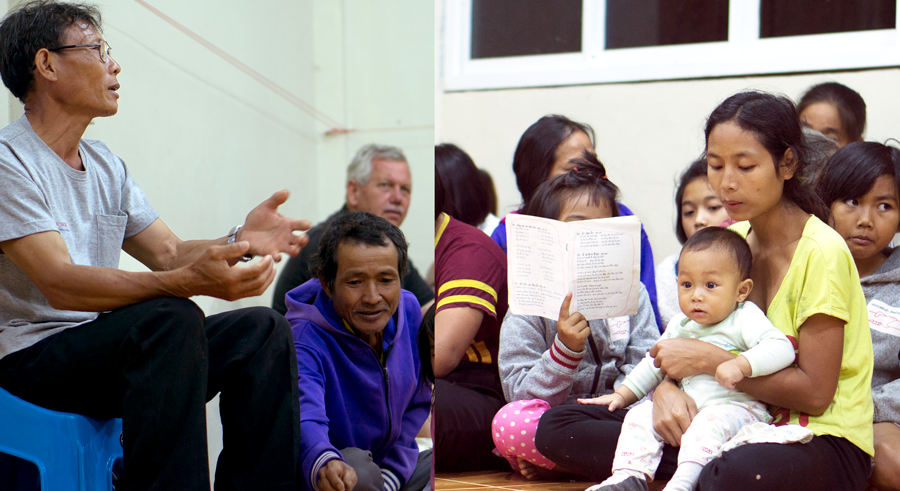
The people of Sandy Creek gather to hear God's Word, Sing and learn to read.
“Finally after these many years, a significant foundation has been laid,” said Larry Goring, who along with his wife, Jill, has helped check the Prai Bible translation. “It proves the fact that laying these foundations takes a long time. And it proves it can be done.”
“Some say the [missionaries] should hurry up,” said Don Creasy from Memorial Park. “We say that when [they] arrived to work with the Prai people, the Prai people had no written language, no exposure to the gospel, and religious notions that go back thousands of years.
“We can only imagine the enormity of the task that was before [the missionaries]. After more than 2,000 years, there are now churches with indigenous leadership.”
Asked to evaluate from a distance what is going on today among the Prai people, Don said, “The numbers that are hearing is a reflection of [their] work over the last 38 years. Having Dee teach is a sign of the future. … I’d say he has prepared the Prais for the future. Well done!”
Will you persevere?
It hasn’t been just the missionary couple who have persevered. It’s been people like you and Don, and churches like yours and Memorial Park, who have stood with them all these years.
In fact, if you’re reading this, you’re probably part of a vast team of people who are praying, partnering financially and encouraging missionaries like them around the world. You may even be standing with someone who serves behind the scenes, perhaps as far behind them as in the USA, someone whose work makes the story among the Prai possible but who, it seems, will never have such a great story of their own.
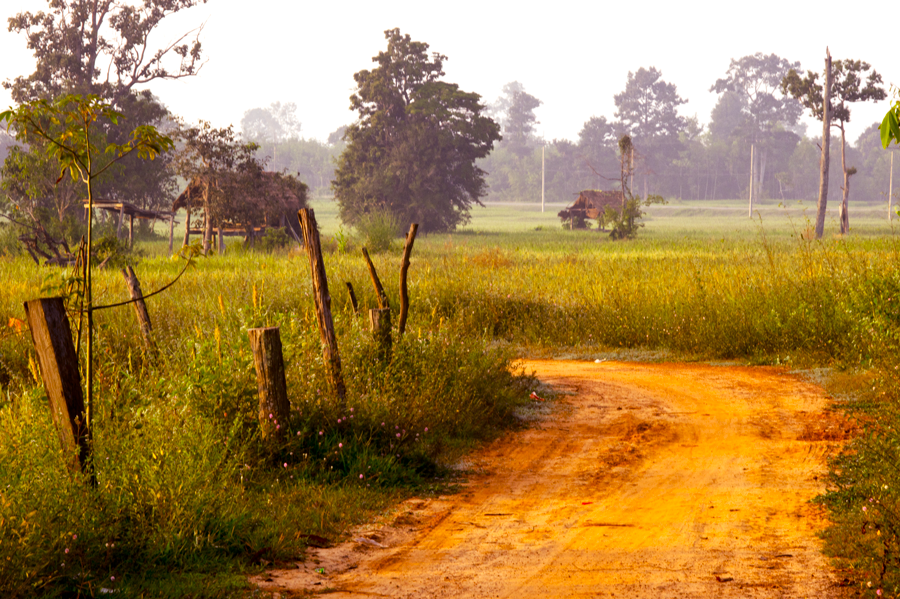
But the Prai story is their story too. And it’s your story. So hang on. Persevere in the face of a culture that wants instant everything, from oatmeal to churches. Making disciples and establishing thriving churches takes time, especially among unreached people groups. And you’re making that possible.
Well done!
